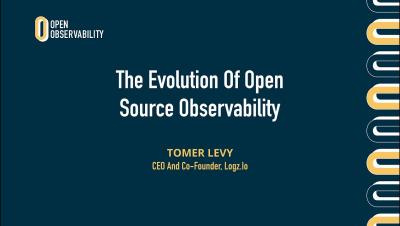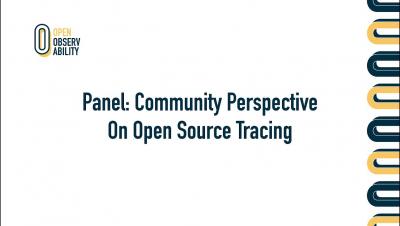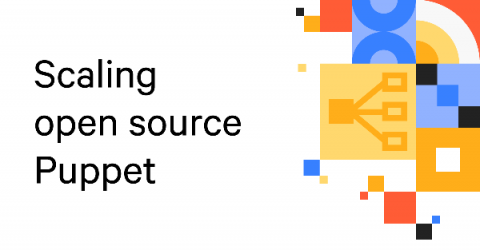Operations | Monitoring | ITSM | DevOps | Cloud
Open Source
Panel: Community Perspective on Open Source Tracing
Moderator: Jonah Kowall, CTO, Logz.io
Panelist: Wu Sheng, Founder, Apache SkyWalking & Founding Engineer, Tetrate
Panelist: Yuri Shkuro, Jaeger Lead & Senior Staff Software Engineer, Uber
Panelist: Jose Carlos Chávez, Zipkin Team Member & Senior Software Engineer, Expedia
Scaling open source Puppet
In my Puppet travels over the last 10 or so years, one topic has continued to arise time and again, and that has been the ability to scale open source Puppet to thousands of nodes. While the best route is to use Puppet Enterprise for solid support and a team of talented engineers to help you in your configuration management journey, sometimes the right solution for your needs is open source Puppet.
Open source software for open infrastructure
Implementing infrastructure using open-source software significantly reduces the total cost of ownership (TOC) of your infrastructure. Over the last few years, we’ve seen more and more companies moving to open source. These include Netflix, Uber, Visa, eBay, Wikipedia and AT&T. And this trend will only continue to grow. The migration is driven by better economics, improved flexibility, better integration capabilities and thus, the higher business value provided by the open source software.
Building confidence and gaining experience with good open source projects
This year, I got a unique opportunity to call in at Mattercon 2020 and give a talk about my experience working on Mattermost and open source software (OSS) in general. I talked about how OSS helped me grow as a self-taught developer and how working on issues from Mattermost’s repos helped me gain experience and confidence in software development. In this article, I will highlight some of the things I talked about and also throw in a few pointers related to working on OSS.
StackState Open-source
Open-source software started around the millennium and is now one of the cornerstones of modern software development. Open-source projects make their source code available to anyone so that engineers across the world can inspect the code to find bugs or make changes to suit their needs. Today, there are more than 180,000 open-source projects available, according to Wikipedia. We at StackState are big believers in open-source software.
Elastic: Distributed by design
As COVID-19 continues to make clear, being adaptable and resilient when the world changes can help a business stay alive. At Elastic, we know from experience that being distributed helps build a strong company that can scale and adapt as new challenges arise. In the spirit of open source and our relationship with the Elastic community, we’ve been offering tips and tricks on our blog and on social media about how to work effectively while remote.
Phillip Ahereza and Allan Guwatudde win Mattermost Bot Hackfest with DigitalOcean Plugin
More than 2,000 developers from around the world participated in our open source bot hackfest, which we hosted on HackerEarth from January 10 through March 2. The goal of the event was to work with our community to create open source chatbots that integrate with Mattermost to accelerate DevOps and DevSecOps workflows, and we received many amazing submissions! We gave away $10,000 in prizes, including $6,000 cash to our top contributors.
Finding a home (and career) in the open source community
Open source software development can have a reputation for abrasive behavior. The search community is a clear counterexample for me, with a culture that emphasizes respect and acceptance. This culture played an important part in my own path to open source development. A little over six years ago, I was a wide-eyed software engineer settling into my first full-time job.
Essential Open Source Serverless Tools
The infrastructure that runs your applications can be nearly as complex as the applications it supports. This complexity generally scales with the resilience of the architecture of your application, the scaling needs, and any security concerns. Thus, successful infrastructure for traditional applications often relies on a comprehensive tooling suite that allows the infrastructure engineers to iterate upon and improve your application’s resources.











